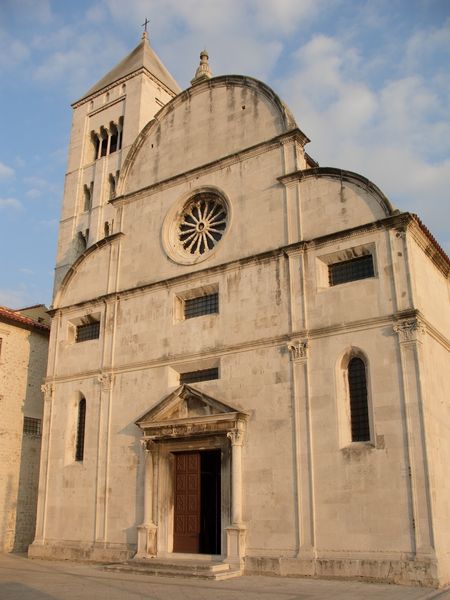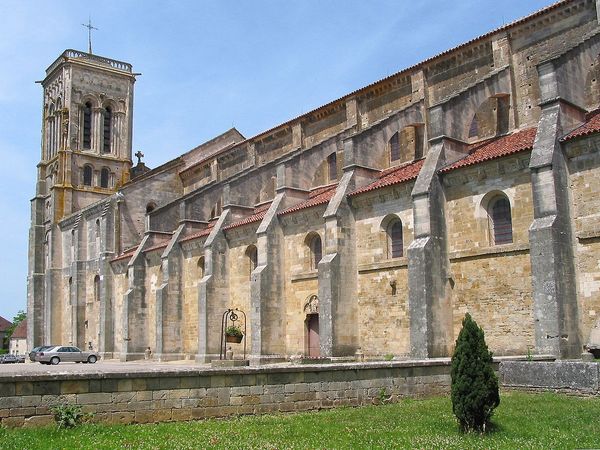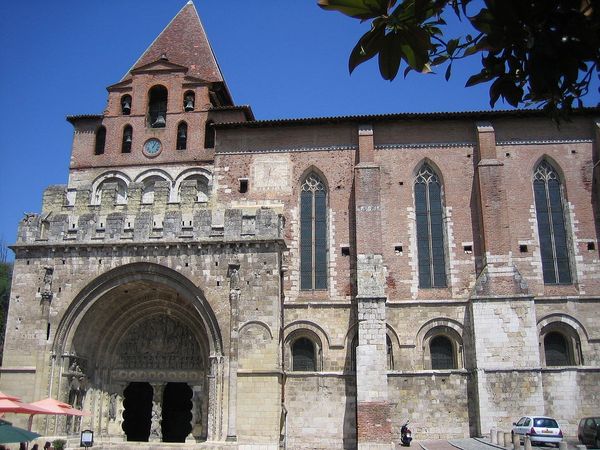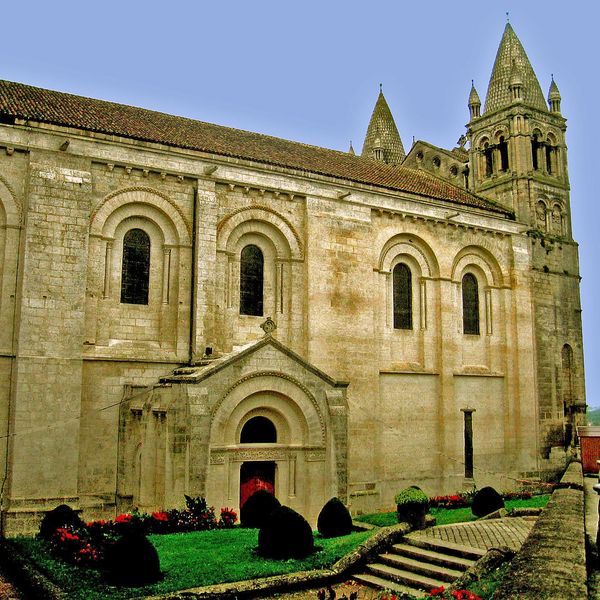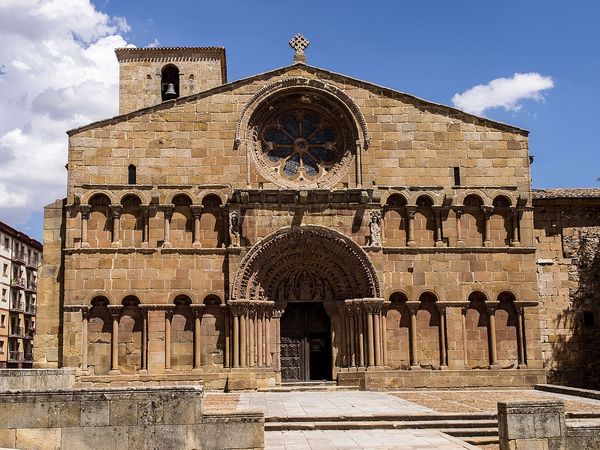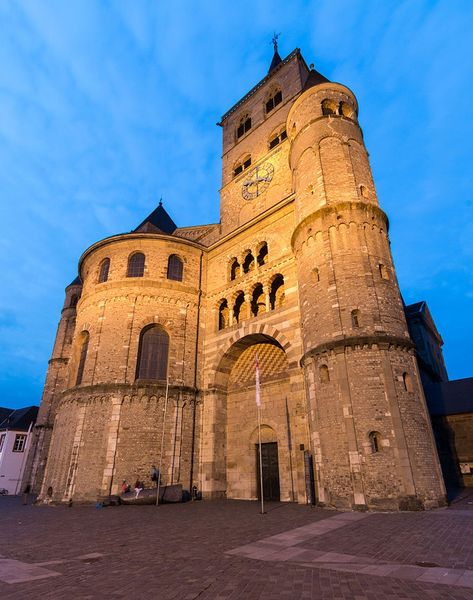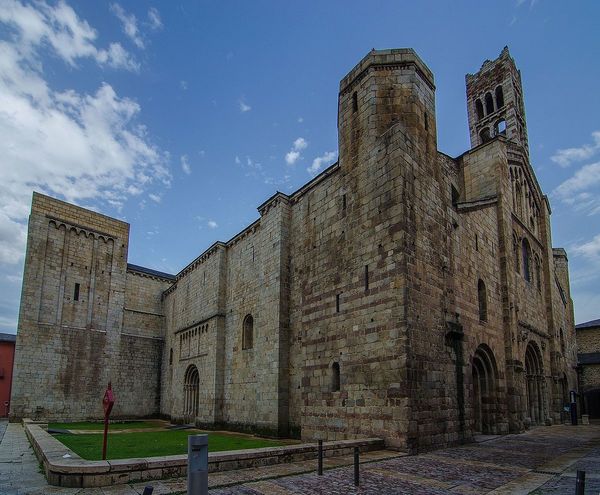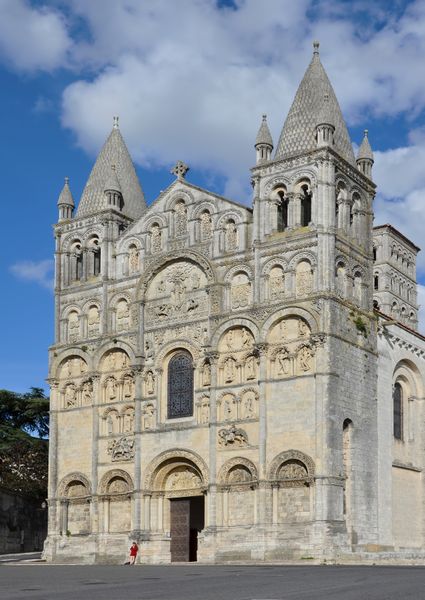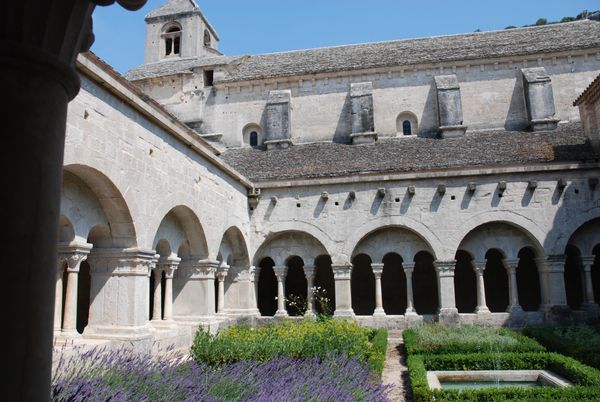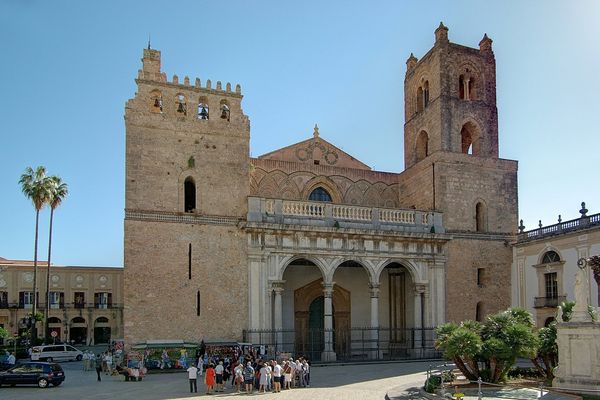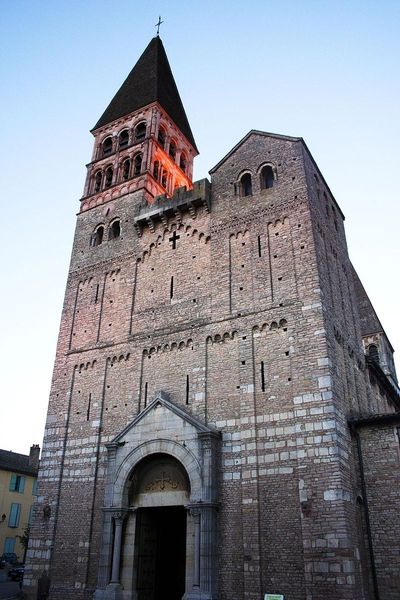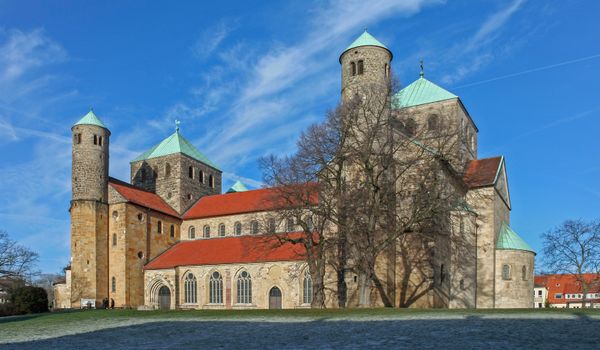
mosaic, architecture
#
mosaic
#
medieval
#
romanesque
#
architecture
Copyright: Public domain
The Cathedral of Zadar, Croatia, built by anonymous Romanesque architects between the 11th and 13th centuries, presents a facade dominated by geometric forms and a pale, textured stone surface. This architectural statement engages the eye through its symmetrical structure, emphasizing balance and order. The arrangement of circles and rectangles creates a hierarchy, drawing the viewer upward. The facade features two large, ornate rose windows, their circular forms contrasting with the rectangular structure. The textured stone surface, marked by repeating patterns, contributes to the cathedral's monumental presence. This interplay of shapes and textures reflects the Romanesque period's attempt to reconcile earthly structures with divine ideals. The cathedral's design uses geometry to construct meaning, inviting contemplation on the relationship between the material and the spiritual realms. The facade's structure embodies not just architectural technique but also a philosophical statement about faith, order, and the human quest for the sublime.
Comments
No comments
Be the first to comment and join the conversation on the ultimate creative platform.
